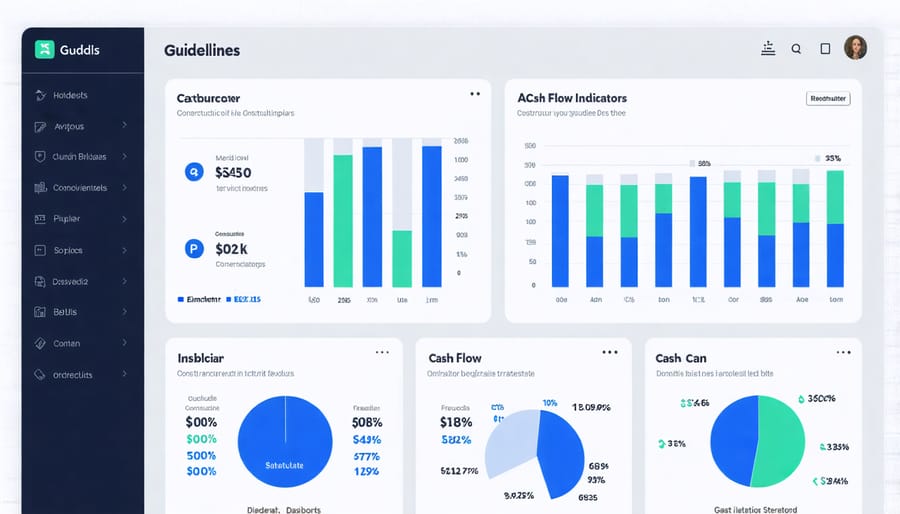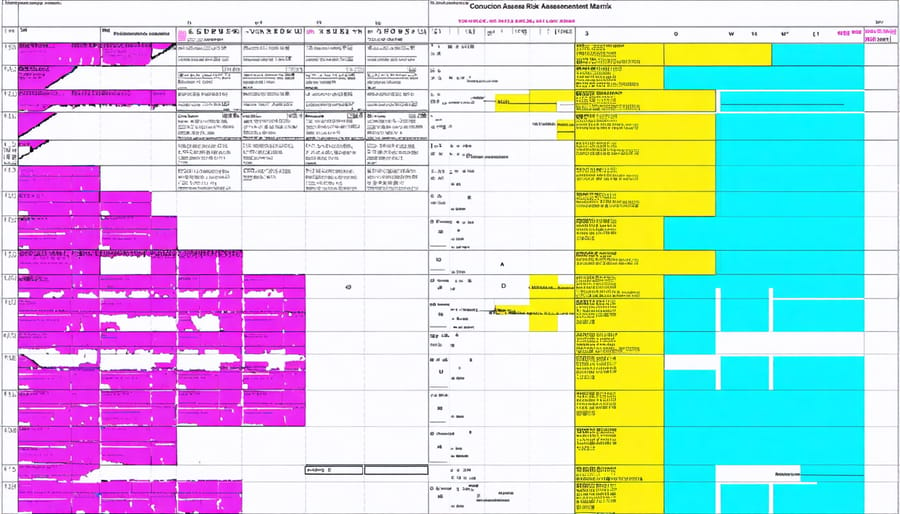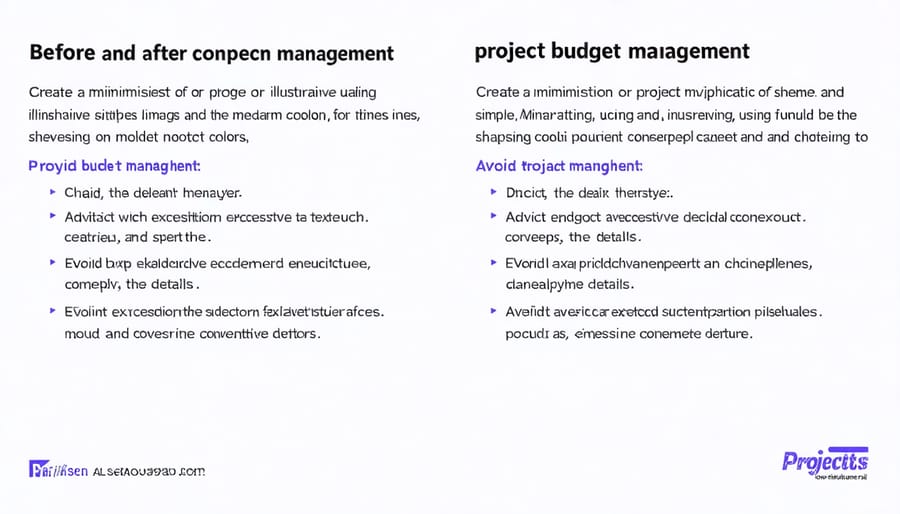In today’s volatile construction market, mastering financial management can mean the difference between project success and catastrophic failure. Construction companies that implement robust risk mitigation strategies consistently outperform their competitors by 15-20% in project profitability.
Modern construction financial management demands a sophisticated blend of traditional accounting principles and cutting-edge digital solutions. From real-time cash flow monitoring to predictive analytics for cost forecasting, industry leaders are leveraging technology to transform financial oversight into a strategic advantage. The stakes have never been higher – with project margins tightening and material costs fluctuating unpredictably, effective financial management has become the cornerstone of sustainable construction operations.
This comprehensive guide explores proven methodologies that successful construction firms use to maintain financial stability while driving growth. Whether you’re managing multi-million dollar developments or overseeing smaller projects, understanding these critical financial management principles will help you optimize resource allocation, enhance project delivery, and secure your company’s financial future in an increasingly competitive landscape.
Core Financial Risk Areas in Construction Projects
Cash Flow Management and Working Capital
Effective cash flow management is critical for construction project success, with research showing that poor cash flow accounts for over 30% of construction business failures. Managing working capital requires careful attention to both timing and volume of cash movements throughout the project lifecycle.
Construction companies face unique challenges in maintaining healthy cash flow due to factors such as payment delays, retainage requirements, and substantial upfront material costs. The gap between expenditures and payment receipts often creates significant working capital demands, requiring strategic financial planning and robust cash management systems.
To optimize cash flow, successful contractors implement several key strategies:
– Accurate cash flow forecasting based on project schedules
– Strategic timing of material purchases and subcontractor payments
– Efficient billing and collection procedures
– Maintaining adequate cash reserves
– Establishing reliable lines of credit
Working capital requirements typically range from 5-15% of annual revenue, depending on project types and payment terms. Companies should monitor key metrics such as Days Sales Outstanding (DSO), Days Payable Outstanding (DPO), and the Cash Conversion Cycle to ensure optimal working capital management.
Regular cash flow analysis and forecasting help identify potential shortfalls before they become critical, allowing proactive measures to maintain project momentum and meet financial obligations.
Cost Overrun Prevention
Cost overrun prevention requires a proactive and systematic approach throughout the project lifecycle. Successful budget management begins with accurate initial cost estimation, incorporating detailed risk assessments and contingency planning. Industry best practices recommend maintaining a contingency reserve of 5-10% for standard projects and up to 15-20% for complex or high-risk endeavors.
Key prevention strategies include implementing robust change order management systems, conducting regular cost monitoring and variance analysis, and establishing clear communication channels between stakeholders. Real-time cost tracking tools and construction management software enable project managers to identify potential overruns before they escalate.
Value engineering plays a crucial role in cost control, allowing teams to optimize design and construction methods without compromising project quality. Regular cost-to-complete analyses help identify trending overruns early, enabling corrective actions before significant financial impact occurs.
Effective procurement strategies, including early contractor involvement and strategic supplier relationships, can help maintain budget control. Regular project schedule reviews are essential, as delays often correlate directly with cost escalation.
Document control and stringent approval processes for expenditures help prevent unauthorized spending. Additionally, implementing earned value management (EVM) techniques provides objective measures of project performance against planned costs.
Monthly financial audits and progress reviews should include detailed cost analysis reports, tracking actual expenditures against budgeted amounts. This systematic approach to cost management helps maintain financial discipline and ensures project success.
Financial Risk Assessment Tools and Techniques
Digital Financial Monitoring Systems
In today’s construction landscape, digital financial monitoring tools have become indispensable for effective project management and cost control. These sophisticated systems integrate real-time data tracking, automated reporting, and predictive analytics to provide comprehensive financial oversight throughout the project lifecycle.
Modern construction financial software platforms typically include features such as automated cost coding, digital invoice processing, and real-time budget tracking. These solutions enable project managers to monitor expenses, track change orders, and manage cash flow with unprecedented accuracy and efficiency. Cloud-based systems allow stakeholders to access financial data remotely, facilitating improved collaboration and faster decision-making.
Enterprise resource planning (ERP) systems tailored for construction projects have evolved to include advanced capabilities such as artificial intelligence-driven cost forecasting, automated compliance monitoring, and integrated risk assessment tools. These platforms can automatically flag budget variances, predict potential cost overruns, and generate detailed financial reports for stakeholders.
Many systems now incorporate mobile functionality, enabling on-site personnel to capture and process financial data immediately. This real-time capability reduces delays in financial reporting and minimizes the risk of data entry errors. Integration with project management software and accounting systems creates a seamless flow of financial information across all project phases.
The implementation of these digital systems has demonstrated significant returns on investment through improved cost control, reduced administrative overhead, and enhanced financial transparency. When selecting a financial monitoring system, organizations should consider factors such as scalability, integration capabilities, user interface design, and support services to ensure optimal functionality for their specific needs.

Risk Scoring Models
Risk scoring models in construction financial management provide systematic approaches to quantify and evaluate potential financial risks in construction projects. These models typically employ mathematical algorithms and weighted criteria to generate numerical risk scores that aid in decision-making processes.
The most widely used model is the Probability-Impact Matrix (PIM), which assigns numerical values to both the likelihood of risk occurrence and its potential impact on project finances. This creates a composite score that helps prioritize risk mitigation efforts. For instance, a high-probability, high-impact risk might score 25 (5×5), while a low-probability, low-impact risk might score 4 (2×2).
Another significant approach is the Monte Carlo simulation, which uses statistical modeling to analyze multiple risk scenarios simultaneously. This method considers various financial variables, including material costs, labor rates, and schedule delays, to generate probability distributions of possible project outcomes.
The Analytic Hierarchy Process (AHP) provides a structured framework for evaluating risks by breaking them down into hierarchical components. This model is particularly effective when dealing with complex projects involving multiple stakeholders and interdependent risk factors.
Modern construction firms increasingly utilize AI-powered risk scoring systems that incorporate historical project data, market trends, and real-time project metrics. These advanced models can detect patterns and correlations that might be missed in traditional risk assessment approaches.
For effective implementation, risk scoring models should be:
– Calibrated to specific project characteristics
– Regularly updated with new data
– Integrated with existing project management systems
– Validated through post-project analysis
– Supported by expert judgment and industry experience

Practical Risk Mitigation Strategies
Contract Management and Payment Terms
Effective contract management and payment terms are crucial components of construction financial management, serving as the foundation for project success and risk mitigation. Following contract structuring best practices helps establish clear expectations and protect all parties involved.
Payment schedules should align with project milestones and include specific triggers for disbursement. Common approaches include progress payments, milestone payments, and retention amounts, typically ranging from 5% to 10% of the contract value. These retentions serve as security against defects and ensure project completion to specified standards.
Key elements to incorporate in contract payment terms include:
– Clearly defined payment milestones
– Change order procedures and associated pricing mechanisms
– Late payment penalties and interest charges
– Dispute resolution procedures
– Performance bonds and payment guarantees
– Detailed scope of work and deliverables
Modern construction contracts increasingly incorporate contingency clauses for material price fluctuations and force majeure events. Payment terms should also address digital payment systems, documentation requirements, and approval processes. Regular contract reviews and updates ensure alignment with project progress and changing conditions, while maintaining proper cash flow management throughout the project lifecycle.
Insurance and Bonding Solutions
Insurance and bonding solutions form critical components of risk management in construction financial planning. To effectively secure project financing and protect stakeholders, construction managers must implement comprehensive coverage strategies.
Key insurance requirements typically include builder’s risk insurance, general liability coverage, and professional liability insurance. Builder’s risk policies protect against physical damage to projects under construction, while general liability safeguards against third-party claims. Professional liability insurance covers errors and omissions in design and management decisions.
Performance bonds and payment bonds serve as financial guarantees for project completion and supplier payment. These instruments typically range from 5% to 100% of the contract value, depending on project requirements and jurisdictional regulations. Surety bonds particularly protect project owners by ensuring contractor performance and financial stability.
Risk transfer mechanisms should be carefully evaluated based on project scope, complexity, and regulatory requirements. Insurance premium costs must be factored into project budgets, while bond requirements need alignment with working capital availability. Modern construction managers increasingly utilize parametric insurance solutions and wrap-up programs to optimize coverage efficiency and cost-effectiveness.
Regular review and updates of insurance policies ensure adequate protection against evolving project risks, while maintaining compliance with contractual obligations and industry standards. This proactive approach to risk management supports project success and stakeholder confidence.

Subcontractor Risk Management
Effective subcontractor risk management is crucial for maintaining financial stability in construction projects. The primary focus should be on thorough pre-qualification, continuous monitoring, and implementing robust payment controls to minimize potential financial exposure.
Before engaging subcontractors, conduct comprehensive financial assessments including credit checks, verification of insurance coverage, and review of past performance. This due diligence helps identify potential risks early and allows for appropriate risk mitigation strategies to be put in place.
Payment management requires careful attention to timing and documentation. Implement a structured payment schedule that aligns with project milestones and includes retention provisions. Ensure all payment applications are properly reviewed and verified against completed work before release of funds.
Key risk mitigation strategies include:
– Regular financial health monitoring of critical subcontractors
– Implementation of performance bonds for high-value contracts
– Clear documentation of scope and payment terms
– Establishment of contingency plans for subcontractor default
– Regular progress reviews and documentation of work completion
Modern construction management software can help track subcontractor performance, payments, and compliance requirements. These tools provide real-time visibility into potential issues and help maintain accurate financial records.
Consider incorporating back-to-back contractual provisions to ensure subcontractor obligations align with main contract requirements. This approach helps protect against financial losses due to subcontractor non-performance or delays while maintaining project cash flow integrity.

Case Study: Successful Risk Management Implementation
The Turner Construction Company’s Asia-Pacific headquarters project in Singapore serves as a compelling example of successful risk management implementation in construction financial management. This $180 million project, completed in 2019, demonstrates how comprehensive risk assessment and mitigation strategies can lead to successful project outcomes despite significant challenges.
Initially, the project faced several critical risks, including material price volatility, currency fluctuations, and complex regulatory requirements. The project team implemented a multi-layered risk management approach that proved instrumental in maintaining financial stability throughout the construction phase.
Key risk management strategies included:
1. Forward contracts for steel and concrete purchases, which protected against price escalation and saved approximately 12% on material costs
2. Implementation of an integrated project delivery (IPD) system that distributed risk among stakeholders
3. Establishment of a contingency fund representing 7% of the total project value
4. Regular financial health monitoring through sophisticated analytics tools
The project team utilized real-time cost tracking software to monitor expenses against budgets, enabling quick identification and response to potential cost overruns. This technology-driven approach allowed for a 15% reduction in administrative overhead costs and improved cash flow management.
A particularly successful aspect was the team’s innovative approach to subcontractor risk management. They developed a pre-qualification system that assessed subcontractors’ financial stability, past performance, and risk management capabilities. This system resulted in zero subcontractor defaults throughout the project duration.
The project’s success metrics included:
– Completion two months ahead of schedule
– Final cost within 3% of the original budget
– Zero major safety incidents
– 98% client satisfaction rating
The risk management strategies implemented during this project have since been adopted as best practices across Turner’s global operations. The case demonstrates how proactive risk identification, coupled with strategic financial planning and modern technology adoption, can significantly improve project outcomes.
This success story particularly highlights the importance of integrating financial risk management into every aspect of construction operations, from procurement to project closeout. The lessons learned continue to influence industry practices in risk assessment and mitigation strategies.
Effective construction financial management remains crucial for project success in an increasingly complex industry landscape. Throughout this exploration, we’ve seen how proper financial planning, risk management, and modern technological solutions work together to create robust financial frameworks for construction projects.
The key takeaways emphasize the importance of comprehensive budgeting, accurate cost estimation, and vigilant cash flow management. Digital transformation continues to reshape financial management practices, with integrated software solutions and data analytics becoming essential tools for informed decision-making.
Looking ahead, the construction industry faces both challenges and opportunities. The adoption of artificial intelligence and machine learning promises to enhance financial forecasting accuracy, while emerging sustainability requirements will introduce new financial considerations. Construction firms that embrace these changes while maintaining solid financial management principles will be better positioned for success.
As the industry evolves, staying current with financial management best practices, leveraging technology effectively, and maintaining strong internal controls will be critical for construction businesses to thrive in an increasingly competitive market. The future of construction financial management lies in the strategic integration of traditional principles with innovative solutions.

